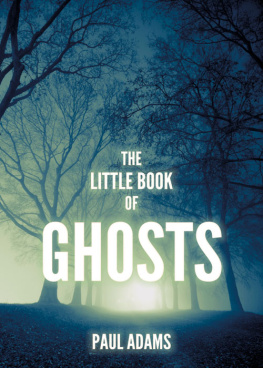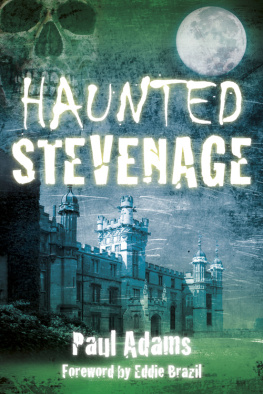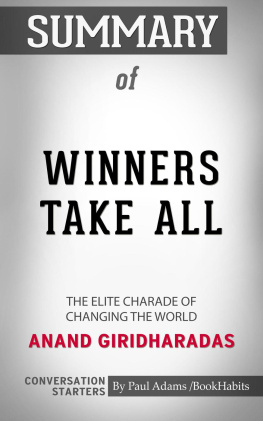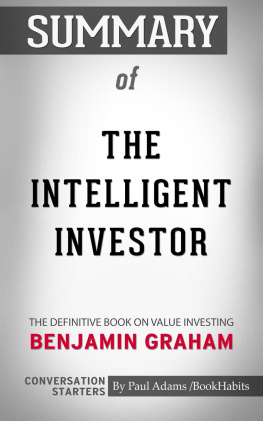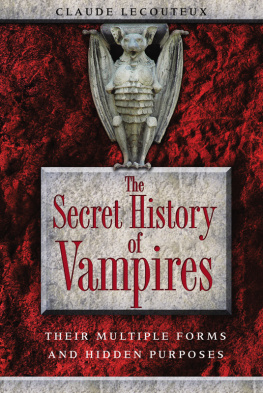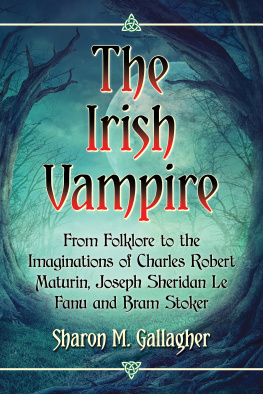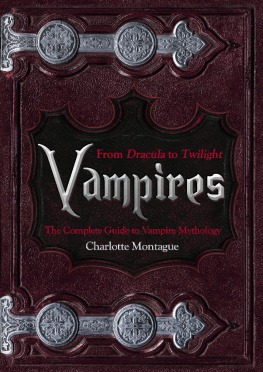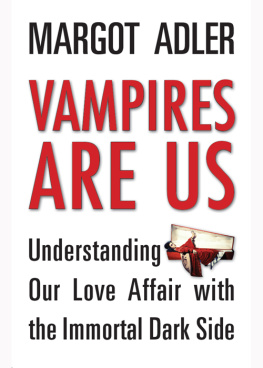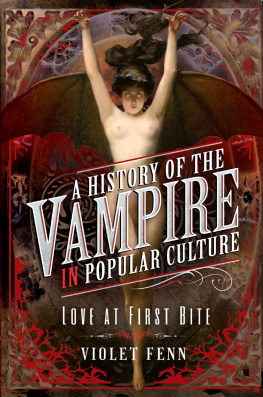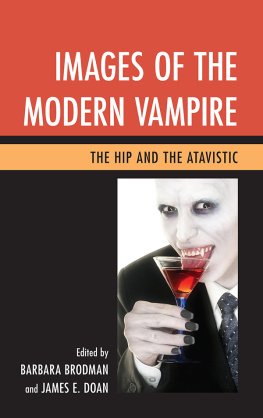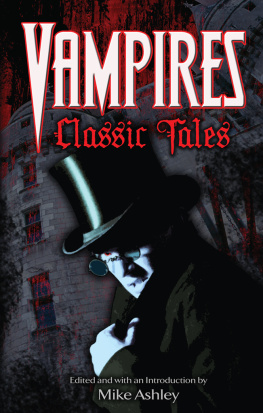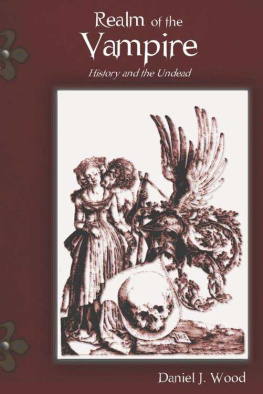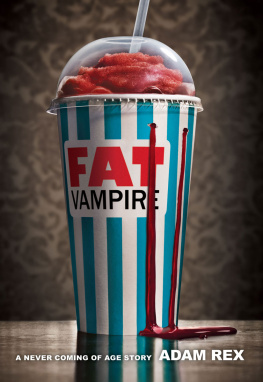
For Alan Frank,
the man who taught me about horror.
Contents
(18161873)
(1100sPresent)
(18471912)
(1890s1940)
(1920s2012)
(18801948)
(19211955)
(19561974)
(19701988)
(1965Present)
(19682010)
(19602000)
(19752013)
V ampires. Blood-drinking spectres that inhabit a world of shadows in a hidden realm somewhere between life and death: seemingly impossible but tantalisingly real; dark but alluring, sensual and dangerous. Today the vampire is a cultural icon whose origins in a distant age of ignorance and superstition continue to make themselves felt. In July 2013, during the time that I was researching and writing this book, archaeologists working on a roadway construction site near Gliwice in southern Poland unearthed what was reported to be an ancient Slavic vampire burial: the skeletal remains of several human bodies, decapitated with the skulls placed between the legs in the hope that the dead would stay dead and not rise from their graves to attack and infect the living. In Bulgaria the previous year, two medieval skeletons were similarly excavated in the Black Sea town of Sozopol. Both bodies had been nailed into the ground with iron rods. Similarly, the day before submission of the final manuscript, the audience at Londons Royal Court Theatre were apparently shocked out of their seats at the gory goings-on in the National Theatre of Scotlands full-blooded stage production of Jack Thornes Let the Right One In , an adaptation of the original Swedish vampire story by John Ajvide Lindqvist.
Looking back, it would seem that any writer of a work on a subject that rational thought and modern scientific study demands to be wholly nonsensical undertakes the task in the shadows of strange revelations that begin in some way to cloud the water. If I had been drafting this introduction in the mid-1990s, the then recent discovery (in 1994) of another skeleton, that of a middle-aged man in a Turkish cemetery on the Greek island of Lesbos, nailed through his neck, ankles and pelvis into his coffin with eight-inch metal stakes, would no doubt be playing on my mind. Similarly, for writers in the early 1970s, the frenzied media coverage of mass vampire hunts and exorcisms in a large Victorian cemetery in north London, just over 25 miles from where I am now writing, would be impossible not to mention and give support to those individuals who still believe and give a positive response to the familiar phrase, Can such things be?
Like many people, my introduction to the world of the vampire came through film and television. At half past ten on Friday, 15 March 1974, wearing no doubt a British Home Stores dressing gown, I sat down aged 7 with my father and watched Dracula Has Risen from the Grave , then a relatively recent offering from Hammer Films and one which we will encounter in more detail in the pages that follow. Here comes the blood! my father announced as the living room filled with the first strains of James Bernards stirring orchestral introduction, and the television screen became a mass of Technicolor gore. Five months later, now in a caravan in Bognor Regis on a tiny black and white portable, Hammer and the Count returned for Dracula: Prince of Darkness , by which time my vampire education had moved up several gears with a copy of Alan Franks recently published and lavishly illustrated, The Movie Treasury: Horror Movies . Despite much exposure to a vast array of cinematic and literary horrors over the years, the vampire remains a personal favourite, one that seems to step out of both the silver screen and books, and become something more than simple words and flickering shadows, walking effortlessly down through the pages of recorded history into the present day.
In this book I have attempted to give a concise account of the British vampire, a strange and compelling amalgam of literature, music, criminology, film, television and the paranormal. Vampiric activity has seemingly been recorded in the British Isles since the days of the twelfth century, when medieval chroniclers set down for posterity accounts of strange happenings and unquiet graves. To these historical reminiscences are added a selection of later happenings, some well known, others obscure, and many of which are still within living memory, such as the Gorbals Vampire, the Blackburn Vampire, Londons infamous Highgate Vampire, and Stoke-on-Trents Vampire of the Villas. The contribution of creative fiction to the world of the undead cannot be underestimated and many British writers have laid down classic works that comprise a formidable and powerful body of literature. As well as the classic writers of the nineteenth century, such as Le Fanu, Rymer and Polidori, I have devoted space to some of the modern masters of terror, including Ramsey Campbell, R. Chetwynd-Hayes, Brian Lumley, Guy N. Smith and Simon Clark, who have all developed, expanded and redefined the vampire novel from its beginnings in the opening years of the 1800s. One writer above all others, now over a century ago, single-handedly created the vampire as a twentieth- and twenty-first-century icon, and it is difficult not to write a work such as this without an examination of the writings of the Irishman, Bram Stoker. He is included here, despite his Dublin origins, due to the fact that his benchmark novel Dracula was both set and published in London, that Stoker himself worked for many years at the Lyceum Theatre off the Strand, and that Ireland did not become totally free from British rule until 1949, by which time his novel had changed the world of the undead forever. Similarly, Montague Summers, whose books remain a constant reference point for students and aficionados of the undead, is another character who would be noticeable by his absence.
As well as fictional horrors, the reality of the vampire in the mind of the murderer has resulted in several violent and tragic deaths which are touched on in a chapter looking specifically at the vampire murderer in Britain. Finally, with the medium of film and latterly television at the forefront of the vampires public persona, both here in the UK and worldwide, I have devoted a not inconsiderable amount of space to the development of the vampire in British cinema, in particular the importance of Hammer Films in the re-establishment of Gothic horror in mid-twentieth century film-making.
Before we begin, though, I would like to take a moment to thank a number of people who have helped considerably in various ways with the task in hand: Peter Underwood, for his interest in the project and for supplying illustrations; Colonel John Blashford-Snell, for recounting his experiences of vampire bats in Darren Province; Tine Appelman, who assisted with reviews for Bram Stokers Dracula ; Darren W. Ritson, who provided the photograph of Croglin Low Hall; David and Della Farrant and Bishop Sean Manchester, for patiently revisiting their involvement in the Highgate Vampire case; Hammer Films historian Wayne Kinsey, who kindly supplied illustrations; Allan Downend and the E.F. Benson Society, who also assisted with illustrations, as did Rosemary Pardoe, Simon Ball, Stephen Jones and Paul Groundwell. I would also like to thank my old friend, Eddie Brazil, for his support and encouragement; Matilda Richards and Naomi Reynolds at The History Press, who have seen this book through to production with their usual efficiency; and finally my children, Aban, Idris, Isa and Sakina, who as usual have had to put up with it all.
Finally, it only leaves me to say that I hope you enjoy exploring the world of the British vampire in fact and fiction. Now, if youre ready, here comes the blood
Next page

